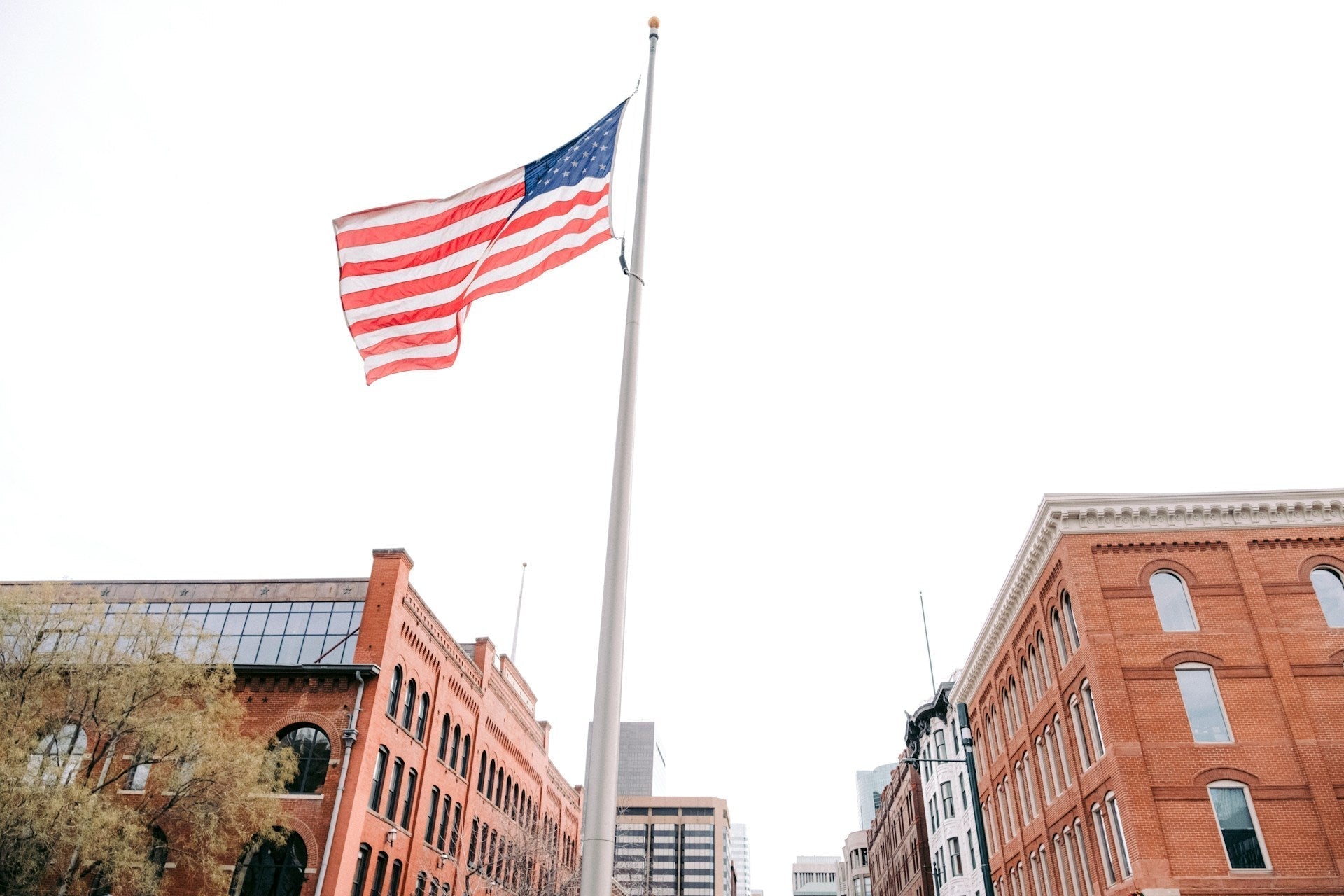
· By Drew Whitmore
Can You Fly the U.S. Flag Upside Down? Meaning & Legal Context
Can You Fly the U.S. Flag Upside Down? Meaning & Legal Context
The American flag is one of the most powerful symbols of the United States.
How it is displayed communicates respect, tradition, and patriotism.
But what does it mean when the flag is flown upside down?
And is it ever legal to do so?
Understanding the meaning and laws around this question helps homeowners, landowners, and event organizers display the flag responsibly, especially during important holidays like Independence Day, Memorial Day, and Veterans Day.
For trusted products, Americana Flagpoles provides reliable solutions, including the popular 24ft flagpole kit, and a full range of American made flags.
The Symbolism of the Upside-Down Flag
Flying the American flag upside down is traditionally recognized as a distress signal.
According to the U.S. Flag Code, it is a sign of extreme danger to life or property.
This use originated from maritime tradition, where an inverted flag signaled a ship in distress.
Outside of these situations, flying the flag upside down is considered disrespectful.
It can be interpreted as a political protest or an insult to the nation, depending on context.
For most citizens, the flag should never be displayed this way unless there is a true emergency.
To ensure you’re always following best practices, avoid common flag display mistakes that could unintentionally disrespect the flag.

The Legal Context
The U.S. Flag Code provides guidelines for how the American flag should be displayed, including the note that it must never be flown upside down except as a distress signal.
However, the Flag Code is advisory and does not carry legal penalties.
Court decisions, such as those related to free speech, have affirmed that displaying the flag in protest — even upside down — is a form of protected expression under the First Amendment.
Still, legality and respect are different things.
Even if technically allowed, homeowners and organizations are encouraged to honor the flag’s dignity by following traditional etiquette.
Proper Installation for Events and Holidays
If you are preparing to display the American flag for patriotic events such as July 4th or Memorial Day, the way you install your flagpole matters.
Temporary flagpoles, such as telescoping or portable ground-mounted poles, are a good choice for events and can be set up quickly.
Check out our guide on how to fold the American flag to better understand ceremonial traditions that often accompany events.
For permanent installations, a sectional or commercial-grade aluminum pole is recommended.
These provide stability for large flags and can withstand year-round weather.
When choosing a permanent pole, check wind ratings to ensure your flag can fly safely in your area.

Height and Placement Guidelines
A residential flagpole is commonly between 20 and 25 feet tall.
For larger properties or farms, taller poles may be appropriate.
The flag should be placed where it has space to fly freely without obstruction.
During special events, multiple poles can be arranged to create striking displays.
For example, lining a driveway or field with smaller temporary poles and flags can create an inspiring patriotic entryway.
If you are unsure about size, research guidelines for different pole heights to match your setup correctly.
If you fly your flag overnight, remember to check whether it’s legal to do so without a light to avoid violations of flag etiquette.
Lighting for Nighttime Display
If you plan to keep your flag flying overnight, the U.S. Flag Code requires that it be properly illuminated.
Solar-powered light kits are ideal for temporary setups, while wired LED systems are recommended for permanent poles.
This ensures compliance with flag etiquette and provides a dramatic nighttime display for holidays and community gatherings.
Respectful Display Practices
While the law may allow certain forms of expression, traditions surrounding the flag emphasize respect and unity.
Flying the American flag right-side up, properly lit, and at the correct height honors the sacrifices of those who served and the values the flag represents.
Knowing how and when to retire your flag respectfully also plays a part in honoring the tradition.
For rural landowners and homeowners alike, taking the time to install and care for a flagpole is part of showing pride in your country.
Conclusion: Honor the Flag, Honor the Nation
Flying the American flag upside down is reserved for true emergencies and distress.
For all other situations, the flag should be displayed with respect, following the guidelines of height, lighting, and etiquette.
Whether you install a temporary pole for a holiday celebration or a permanent flagpole for daily display, the way you honor the flag reflects the pride you have in your home and country.
For any questions about flagpoles, accessories, or installation, reach out through our contact page.
